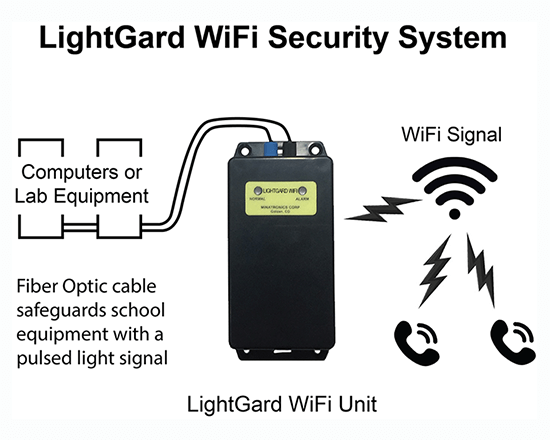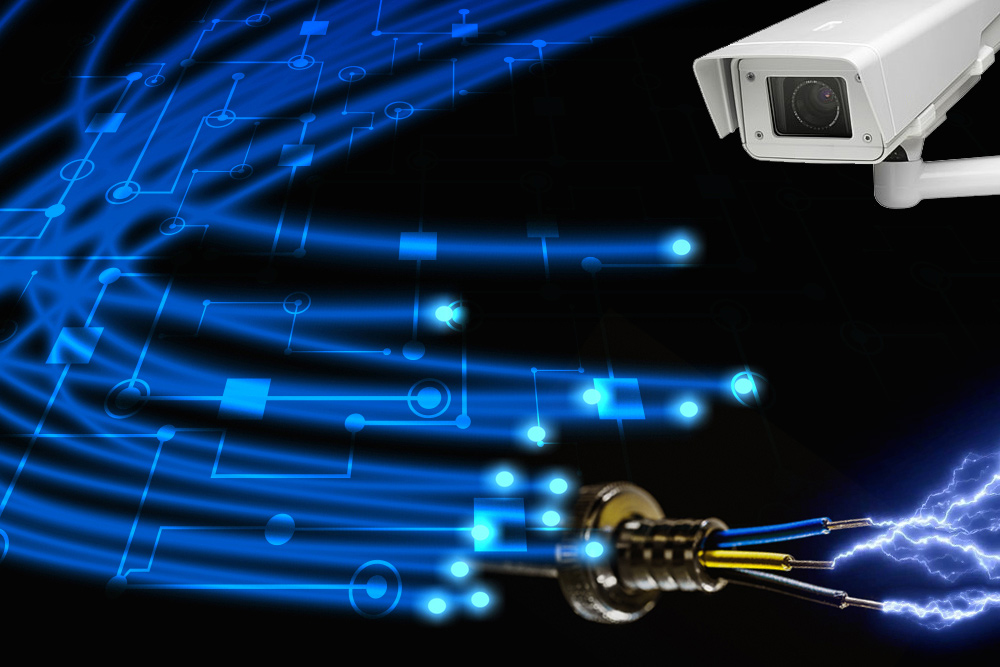The Future of Fiber Security System in Modern Security Solutions
Wiki Article
Enhance Your Safety And Security With Advanced Fiber Optic Protection Solutions
In a period where safety is paramount, advanced fiber optic safety systems provide an engaging service for improving security across different settings. What effects do these improvements hold for future protection procedures?Benefits of Fiber Optic Security
Harnessing the advantages of fiber optic technology considerably boosts safety and security systems across different applications. Among the key advantages is the boosted data transfer capacity, permitting the transmission of huge amounts of data at high rates. This is particularly crucial for real-time video clip security, where high-resolution feeds can be sent without latency, guaranteeing instant feedback abilities.Additionally, optical fiber show superior resistance to electro-magnetic disturbance, which is important in settings with prospective signal disruptions. This reliability ensures consistent efficiency in essential security procedures. Fiber optic cables are much less susceptible to touching and unapproved accessibility contrasted to standard copper circuitry, thus boosting information integrity and privacy.
An additional significant advantage is the resilience of fiber optic systems; they are much more resistant to environmental elements such as dampness, temperature fluctuations, and harsh substances. This resilience converts to decrease maintenance prices and longer lifespans for security setups.
Lastly, the light-weight nature of fiber optic cords helps with much easier installation and transmitting, specifically in complex infrastructures (fiber optic security system). Inevitably, the integration of fiber optic modern technology into protection systems not just reinforces protection steps however also optimizes operational efficiency
Trick Attributes to Consider
When examining fiber optic security systems, several crucial features must be considered to make sure ideal efficiency and efficiency. First, evaluate the system's detection range and level of sensitivity; an extensive range permits for monitoring big locations, while high level of sensitivity ensures that also minor disruptions are detected without delay.Following, consider the assimilation capabilities of the system. A fiber optic protection system need to perfectly user interface with existing safety actions such as video cameras and alarms, creating a natural security network.
Durability and ecological resistance are also important attributes. Guarantee that the system is made to withstand severe climate condition and prospective physical threats, as this will prolong its functional life-span.

Lastly, explore the scalability of the system. A robust fiber optic safety and security system ought to be quickly expanding to accommodate future needs without significant overhauls. By carefully considering these features, you can choose a fiber optic safety and security solution that improves security and safety in your environment.
Installment Process Introduction
To successfully implement a fiber optic safety system, a methodical installation procedure is important. This procedure begins with a comprehensive website evaluation to establish the certain safety demands and to recognize ideal areas for fiber optic cable televisions and safety devices. Following this evaluation, the setup group will develop a thorough strategy, including cable paths, needed devices, and conformity with neighborhood laws.Next, the setup includes laying the fiber optic cords, ensuring they are shielded from ecological variables and physical damage. Appropriate handling methods are vital, as fiber optic cable televisions are sensitive and can be quickly harmed. After the cabling is mounted, adapters and discontinuations are diligently completed to make certain signal stability.
The succeeding phase contains mounting safety devices such as cameras, movement detectors, and security system, all incorporated with the fiber optic network. Rigorous screening is performed to confirm that all components are functioning appropriately and to ensure optimal efficiency.

Contrasting Fiber Optic to Traditional Solutions
The advancement of safety and security technology has actually led to substantial improvements in the comparison in between fiber optic systems and traditional copper-based systems. Fiber optic systems utilize light to transmit data, offering superior bandwidth and rate compared to their copper equivalents. This causes boosted information transmission capabilities, making optical fiber excellent for high-resolution video surveillance and real-time surveillance.Furthermore, fiber optic wires are immune to electro-magnetic interference, minimizing the probability of signal deterioration caused by exterior variables. This characteristic makes certain constant efficiency, even in challenging environments. In contrast, conventional copper systems are much more at risk to interference, resulting in potential susceptabilities in security applications.
Resilience is another benefit of fiber optic systems. They are much less prone to damage from environmental aspects such as dampness and temperature level variations, which can endanger copper wiring. Additionally, optical fiber are lighter and thinner, enabling simpler installation and lowered physical impact.
Nonetheless, standard systems tend to have reduced first prices, making them attractive for budget-conscious projects. While fiber optic systems may need a greater ahead of time investment, their lasting advantages-- such as reduced maintenance expenses and better reliability-- usually surpass the preliminary expense, placing them as an exceptional choice for contemporary security demands.
Future Trends in Safety Innovation
Emerging trends in safety and security technology are poised to change the landscape of surveillance and hazard detection - fiber optic security system. As organizations increasingly encounter sophisticated dangers, innovations such as fabricated intelligence (AI) and artificial intelligence (ML) are becoming integral to protection systems. These technologies enhance the ability of fiber optic systems by making it possible for real-time data analysis, recognizing anomalies, and automating responses to possible violationsFurthermore, the assimilation of the Internet of Points (IoT) is transforming safety and security frameworks. IoT devices can offer thorough situational recognition and promote smooth communication in between different safety parts. This interconnectedness enables for more efficient tracking and security fibers faster incident reaction times.
Biometric verification is additionally acquiring momentum, offering a higher level of security via one-of-a-kind physical attributes. As this innovation evolves, it is likely to be included right into fiber optic systems for enhanced gain access to control.
Conclusion
In verdict, advanced fiber optic security systems represent a considerable development in safety and monitoring modern technology. Their superior data transfer, resistance to disturbance, and sturdiness help with trustworthy surveillance and data stability. As these systems integrate AI and IoT capabilities, they improve the total protection structure, making sure durable protection for properties. The change from standard systems to fiber optic remedies mirrors a growing pattern in the direction of extra reliable and efficient protection actions in a progressively complicated technical landscape.Report this wiki page